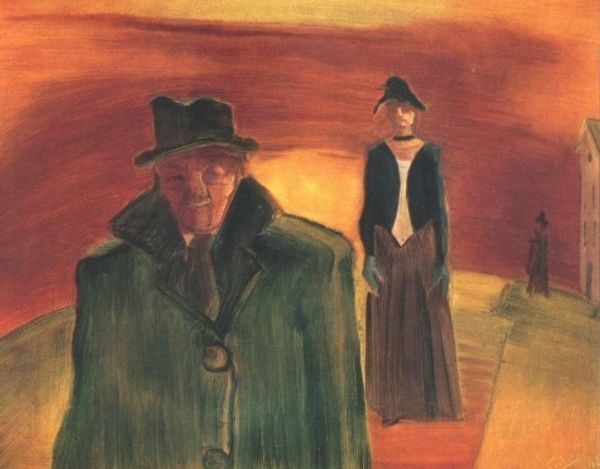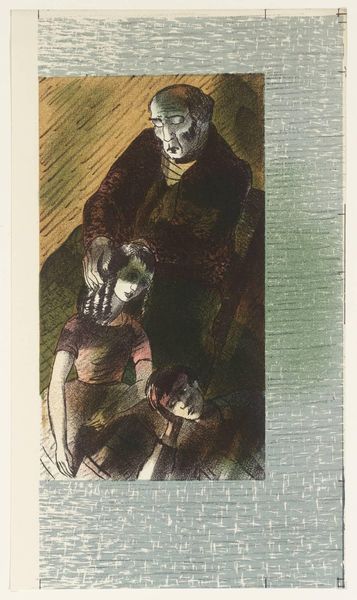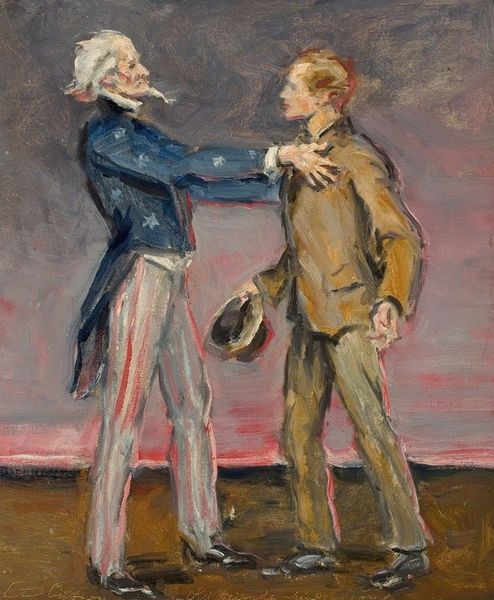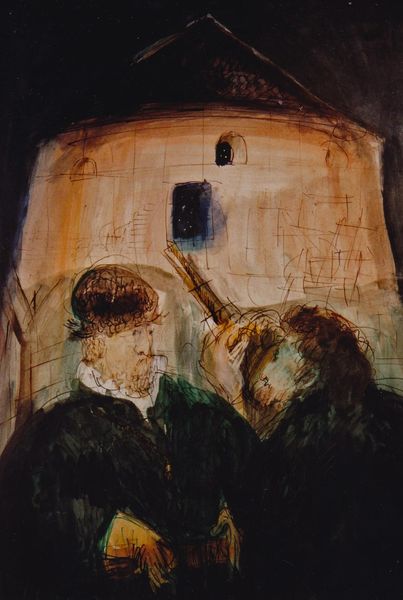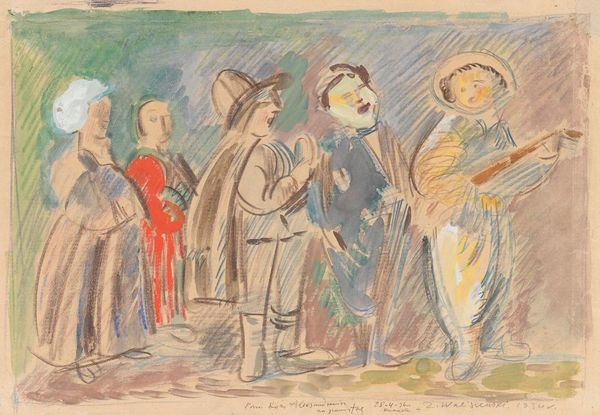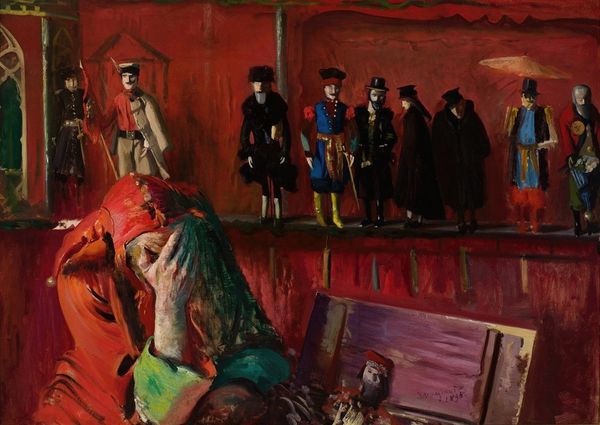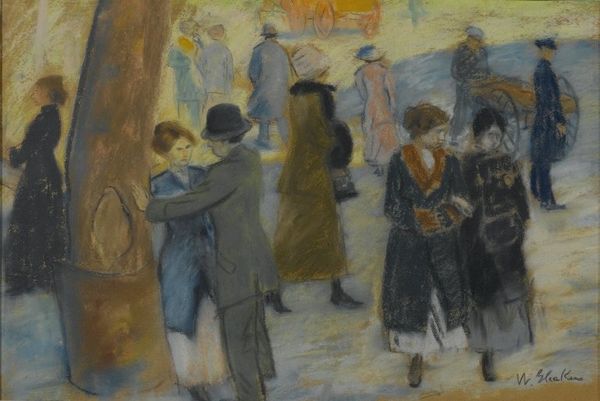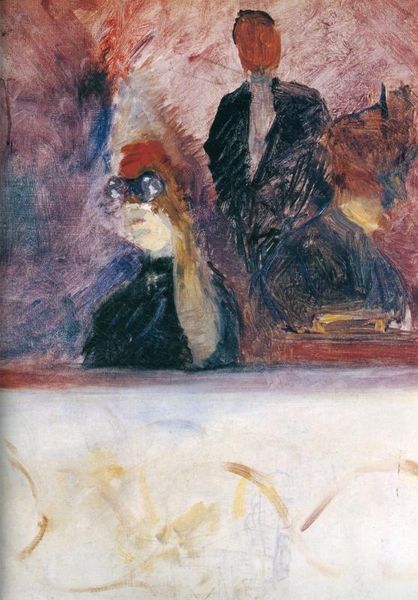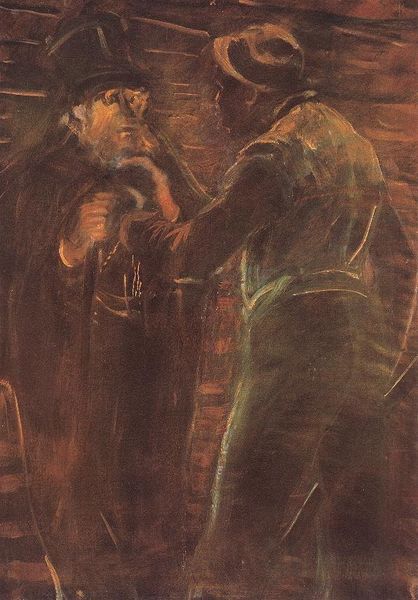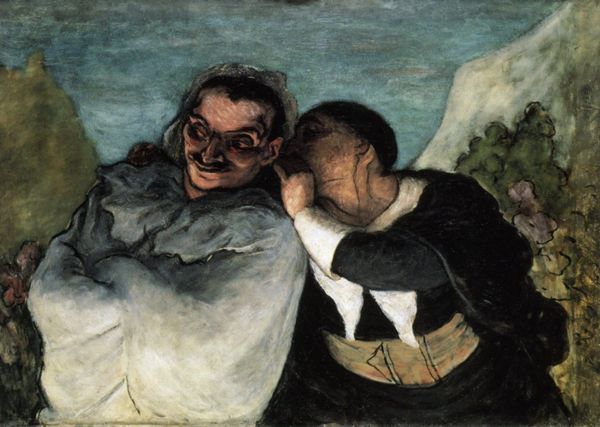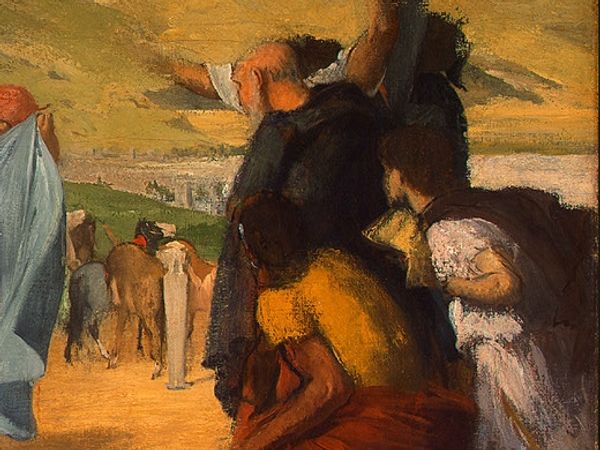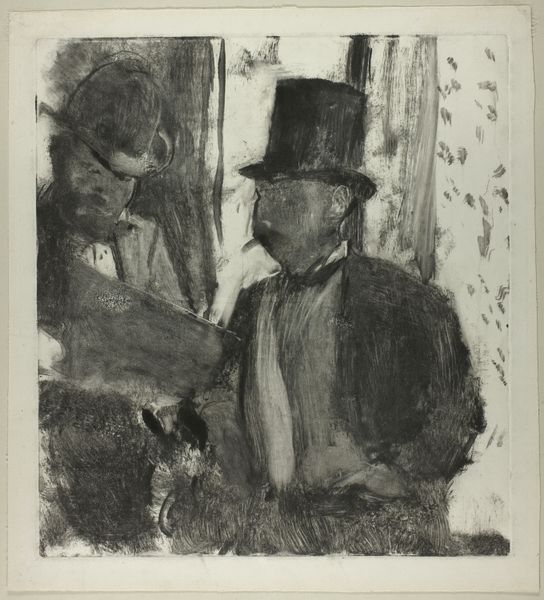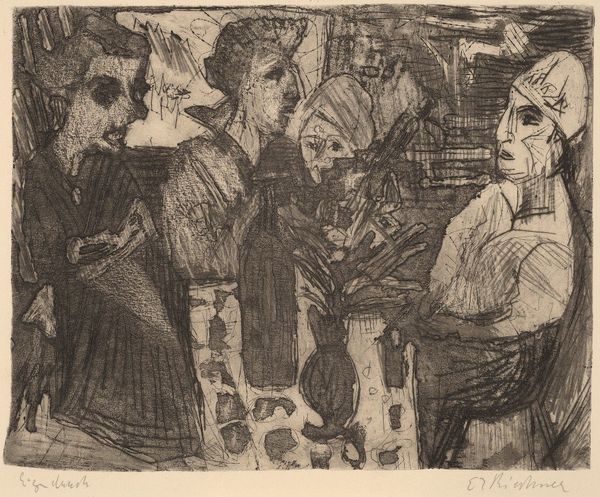
Copyright: Public domain
Curator: Istvan Farkas created "The Aged Sailor and the Old Woman" in 1939, using oil paint. It’s quite a striking piece, wouldn't you agree? Editor: Yes, it certainly evokes a somber mood. The palette feels muted, and there’s something unsettling in the subjects' expressions—as if they’re sharing a silent, heavy burden. The forms are rudimentary. Curator: I find the sailor's headgear and beard intriguing. This hat-like construction is peculiar. I suppose this would hint to his profession, a person with worldly experience but the construction of it has a rudimentary, strange presence, so unreal... It projects an image, a figure, but also alludes to deeper symbolism tied to voyages and perhaps also delusion. Editor: Absolutely. Maritime symbolism frequently points to journeys, the unknown, and often a confrontation with the self. His gloved hand gripping that cane, coupled with the woman's wrap, indicates vulnerability, fragility and age, but the use of the symbol pushes further. The wrapping of the woman's body implies the burden on domestic space while the stick also speaks to a biblical reference, perhaps? Curator: Note the composition as well; a horizon that appears unreachable in relation to the subjects and an artificial light that highlights their presence but removes a natural, spatial connection. The light and the spatial arrangement gives the whole construction of the painting a peculiar symbolic expression. Editor: True, but consider how their placement pushes our understanding of form and the use of space. There’s a sense of forced and staged presentation to underline each person's function. Her gaze avoids any connection with him while her head, swathed in fabric, presents both protection but also alienation. The artist is definitely thinking about concealment. Curator: Concealment, yes, but also the fundamental structure underlying representation. The very way that Farkas paints form has so much weight! Editor: Indeed, through such a limited arrangement of simple figuration, he coveys such an exploration of aging, a memory or reminder of human fallibility and maybe even loss, but within the symbolism of tradition and religion. A wonderful paradox! Curator: It’s fascinating how we can peel back layers to find form speaking both literally and symbolically at the same time. Editor: An unexpectedly affecting portrait of life using archetypes. I'm now struck more deeply by how he crafted such compelling psychological figures using such raw, minimalist expression.
Comments
No comments
Be the first to comment and join the conversation on the ultimate creative platform.
